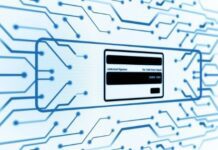The third-generation internet, also known as Web 3.0, is the next step in the evolution of the World Wide Web. It delivers a data-driven Semantic Web that uses machine-based data interpretation to present users with a more intelligent and connected web experience.
Today’s top web development firms are static, unable to adapt to the unique demands of each person who uses them. Web 3.0 claims to be more dynamic and engaging than previous versions. It will reimagine the web experience with structural improvements to assure democratization across all elements of the internet by incorporating artificial intelligence and blockchain technologies.


Data is safely saved and spread across multiple devices in Web 3.0, obviating the need for centralized servers. Because data is no longer stored centrally, the risk of massive data leaks is minimized, making it more resistant to compromise.
Data Expansion and the Road to Web 3.0
What exactly is Web 3.0? Is this the internet’s future? if you search for a Web 3.0 definition, you’re unlikely to come across one that is both obvious and distinct. “People keep asking what Web 3.0 is,” Tim Berners-Lee commented in 2006. Maybe you’ll have access to an extraordinary data resource when you have an overlay of scalable vector graphics atop Web 2.0 everything rippling and folding and looking misty and access to a Semantic Web integrated across a big data area…”
Consider that consumer IP traffic will triple in size from 2017 to 2022, growing at a compound annual growth rate of 27%. By 2022, global consumer IP traffic will have reached 332.7 EB each month. Every day in 2020, 2.5 quintillion bytes of data will be generated, with machines accounting for 40% of it. Every minute, 152,200 IoT devices will connect to the internet by 2025.
While it is indisputable that data volumes are increasing at an exponential rate (and we will continue to create more information to manage every second), the discussion over a Web 3.0 definition and its linkages to the digital universe of data is still ongoing.
Web 3.0 Features and Definition
Web 3.0 is a decentralized web that is powered by machine learning and artificial intelligence and uses blockchain technology. The final product is a real-world human discussion. Users keep custody of their data and material, and they can sell or trade it without losing ownership, jeopardizing their privacy, or relying on third parties. This business concept allows users to log into a website without their internet identity being tracked.
The digitalization of assets via tokenization is critical to Web 3.0 innovation. Tokenization is the process of converting physical assets and rights into a digital representation, or token, that can be used on a blockchain network. Cryptocurrency and fungible tokens are digital currencies that can be readily transferred between networks, enabling a new business model that democratizes money and commerce. NFTs (nonfungible tokens) are data units that represent unique assets such as avatars, digital art, or trading cards that users can own and market for their own advantage.
1. Semantic Web:
The Semantic Web is the next step in the evolution of the Internet. By focusing on the meaning of words rather than keywords or numbers, the Semantic Web improves web technologies’ ability to generate, share, and connect material through search and analysis.
2. Artificial Intelligence (AI):
By combining semantic capabilities with natural language processing, computers can comprehend information on a human-like level, resulting in faster and more relevant results. As a result, they grow smarter and more capable of meeting consumer wants.
3. 3D Graphics:
In Web 3.0, three-dimensional design is widely employed in websites and services. This can be found in museum guides, computer games, eCommerce, geospatial contexts, and a variety of other areas.
4. Connectivity:
Web 3.0 makes information more connected thanks to semantic metadata. As a result, the user experience advances to a new level of connectivity that utilizes all available data.
5. Ubiquity:
Internet content and services can be accessed via a variety of devices at any time, rather than just computers and smartphones. In many respects, Web 2.0 is already omnipresent, but the rise of IoT devices will push it to new heights.
6. Blockchain:
Blockchain technology protects and encrypts user data. This prevents large corporations from obtaining control of and/or exploiting the personal information of their customers.
7. Decentralized:
Data is stored in decentralized data networks via peer-to-peer connections. Users retain control over their data and digital assets, and they can access their accounts securely and anonymously over the internet.
8. Edge Computing:
Web 3.0 is built on the advancement of edge computing, which process apps and data at the network edge on devices like smartphones, laptops, appliances, sensors, and even smart cars.
What Impact Will Web 3.0 Have on Our Lives?
These features aid in the development of a Web 3.0 definition. Web 3.0 is an evolution in which computers can grasp the meaning of underlying information thanks to the integration of semantics and machine learning. They can figure out what you’re interested in, assist you in finding what you want more quickly, and comprehend the relationships between items.
Let’s take a look at an example that incorporates all eight of these traits.:
You can ask your automotive helper a question while driving in Web 3.0: “I’d like to see a romantic movie and eat Japanese food.” The search engine built into the car assistant gives you a customized response based on your location, recommending the closest theatre that matches your request and an excellent Japanese restaurant based on social media ratings. The screen might then display a 3D menu from the eatery. Then it might show a 3D menu from the restaurant on the screen.
Conclusion
Web 3.0 is no longer a pipe dream; in many situations, it has become a reality. Indeed, cognitive technology, such as that provided by expert.ai, is enabling all of this. The importance of language in so many parts of the Internet cannot be overstated. If semantics and natural language processing are fundamental components, the possibilities are endless.






















